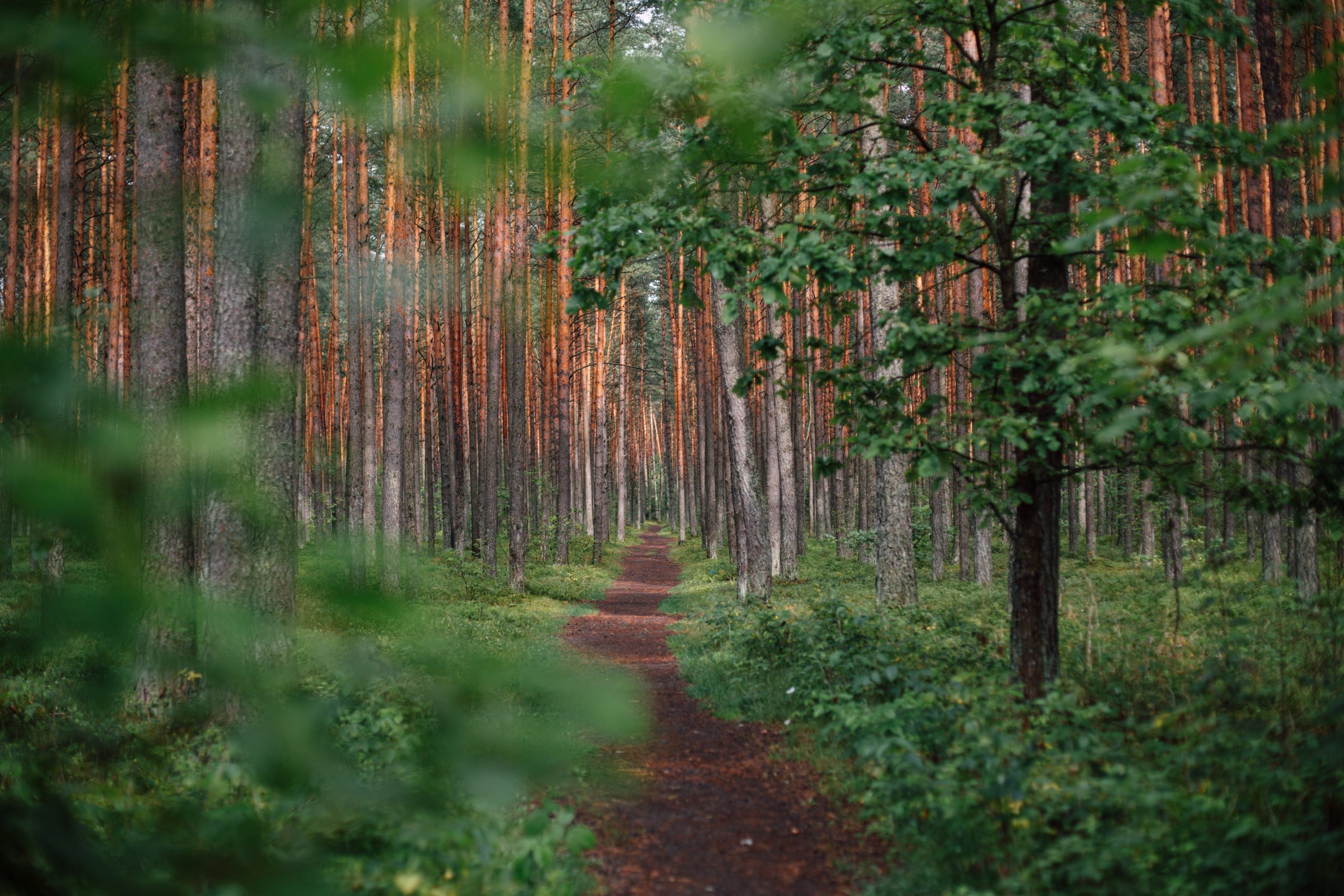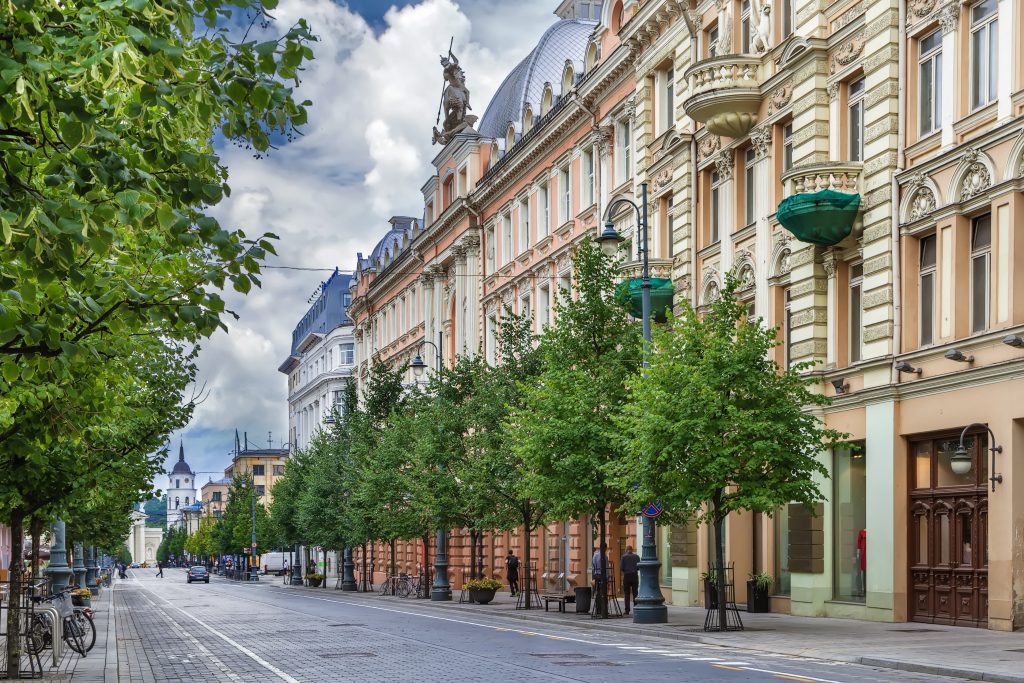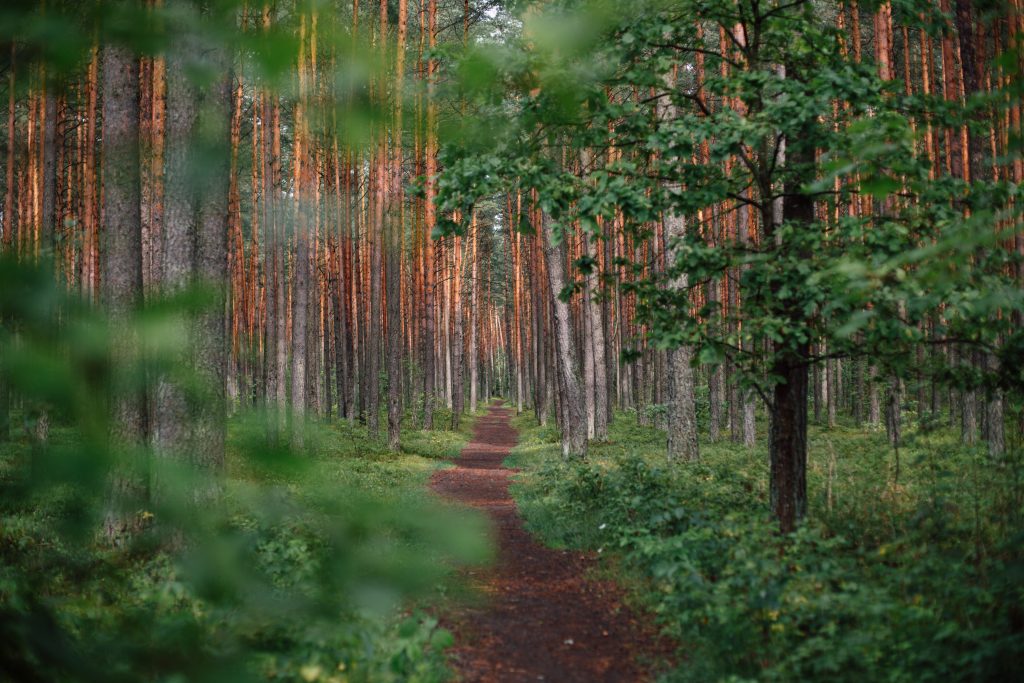The small country of Lithuania is one of those old-world locations with beautiful cobblestone old towns and villages and a complicated, complex history. This country also happens to be one of the most awe-inspiring and engaging countries in this part of the world, with an equally fascinating language.
Lithuania is the belle of the Baltic States. Known by some as ‘the Land of Storks’ due to its large population of these majestic birds. As the birds probably agree, Lithuania is best viewed from above, and the country has more hot air balloons than people. Whether you’re here for the historical architecture, stunning bird’s-eye views, or the captivating nature of the North. Either way, you’re sure to fall in love with this quirky country.
Landscape
Lithuania is the largest country in the Baltics and boasts significant natural beauty. You’ll find lush rolling green hills, dense forests, and a wealth of fauna covering over a third of the country. Its moderate, wet Northern climate means nature can thrive. Lithuania boasts a host of national parks with many lakes and rivers that make for unforgettable outdoor adventures. A rare geographical marvel is the Curonian Spit, characterized by gargantuan dunes, deserted beaches, and rich forests. It’s a piece of paradise on the Baltic coast that few have heard of. In the other two thirds, you’ll find cities and towns with a rich and unique history. The medieval capital of Vilnius is one of the oldest in the country. The stylized Baroque buildings winding around the river will have you falling in love at first sight.
Gastronomy
Potatoes are the king of Lithuanian gastronomy, and you’ll be hard-pressed to find a dish that doesn’t capitalize on the lovely legume. Potato pancakes, potato pudding, even the local vodka is made from potatoes. The national dish is a simple and hearty Capelinai or ‘Zeppelin’. Made from stuffing pork into, you guessed it – potatoes. Casually combining their mad obsession with potatoes and balloons. The moist northern climate is great for growing underground produce. So you’ll also find many beets, greens, berries, and mushrooms gracing the plate.
Culture
Culture in the country is very family focused and heavily dependant upon tradition. With a long history and sizeable compendium of folklore, Lithuania has many superstitions and peculiar traditions. One of the more fun rituals is to always bring a gift of Krupnika, (traditional Lithuanian honey liquor) when visiting someone’s home. Each person should pour a shot for the peer on their left, look them in the eye and say “I sveikata” (cheers). Not a bad way to break the ice. Generally, strolling down the street and whistling a happy tune is a carefree way to go about your day. Though should be avoided when in Lithuania as it’s said to attract ghosts and spirits. Spooky.
Best Time To Visit
The best weather in Lithuania is from late Spring to Summer (May to August). When the winter releases its icy grip and flowers begin to blink open and days warm up. Autumn cools rapidly but is effortlessly beautiful. As the countryside bursts into colour and leaves turn every shade of gold, red, and orange.
May and September are the quietest times aside of summer. Where you can stroll the cobbled streets with little foot traffic and accommodations are a little cheaper.
Spring to Autumn is also the best time for that must-do activity in the city of Vilnius – hot air ballooning. Every day, thousands of the bulbous beauties can be spotted on the horizon. Catch your chance for the perfect view of the enchanting medieval city below. For an even more dreamy scene. Arrange to fly over Trakai National park to witness the mesmerizing lakes and quaint castle below.
As ballooning is weather dependent, check the weather is clear and calm and leave room in case you need to reschedule. Wrap up warm for the chill lofty air and don’t forget your camera as the sights will be unforgettable.
What To Expect
Lithuania is still a hidden gem of the North. Here are the basic facts for your trip.
Currency – The official currency is the Euro
Language – The official language is Lithuanian
ATMs – There are many 24 hour ATM’s throughout the country and small towns.
Plugs & Sockets – Lithuania uses the Europlug, or Type C style plug with 2 round pins. As well as the Type F plug with 2 earth clips. The standard voltage is 230v and 50Hz frequency.
Safety – Lithuania is considered a generally safe country, with crime levels at a low.
Climate – Lithuania typically sees short, warm summers and freezing winters as the Baltic Sea breeze creeps in. The warmest month is July reaching a comfortable 22 degrees Celsius. Dropping to a brisk -9 in January.
It’s best to carry a waterproof at any time of year, as the rain in Lithuania can be unpredictable.
History
A former Soviet nation, Lithuania only gained its new independence in 1990. The country suffered a tumultuous history throughout World War II and the Holocaust. Thousands of Jews were murdered in the Paneriai Forest, 10 km from the capital. The deplorable story is depicted in a small museum in the area, and many people come to pay their respects under the trees. An even more grisly place lies in Žemaitija National Park. A former Soviet nuclear missile base is buried within the forests and casts a haunting aura over the area.
Know Before You Go
Many countries try to claim the title, but Lithuania is the actual centre of Europe. A spot in the village of Purnuškės is the winning patch. It’s commemorated with a sculpture declaring it the “Geometric Centre of Europe”.
You might be surprised to hear a lot of people sneezing in Lithuania. They’re saying thank you, “aciu” (pronounced ahchoo) and they’re well aware of its comic value. Lithuanian is the oldest surviving Indo-European language and the 7th oldest in the world.
Lithuanians know how to enjoy a break, and you should indulge in their café culture. Cosy up out of the cold weather with a coffee, cake and a good book and recline into the Lithuanian lifestyle.
Lithuania has a great public transport infrastructure and the bus is an ideal way to get around. Buy your tickets from a kiosk or directly on the bus, and make sure you validate them in the machine.


